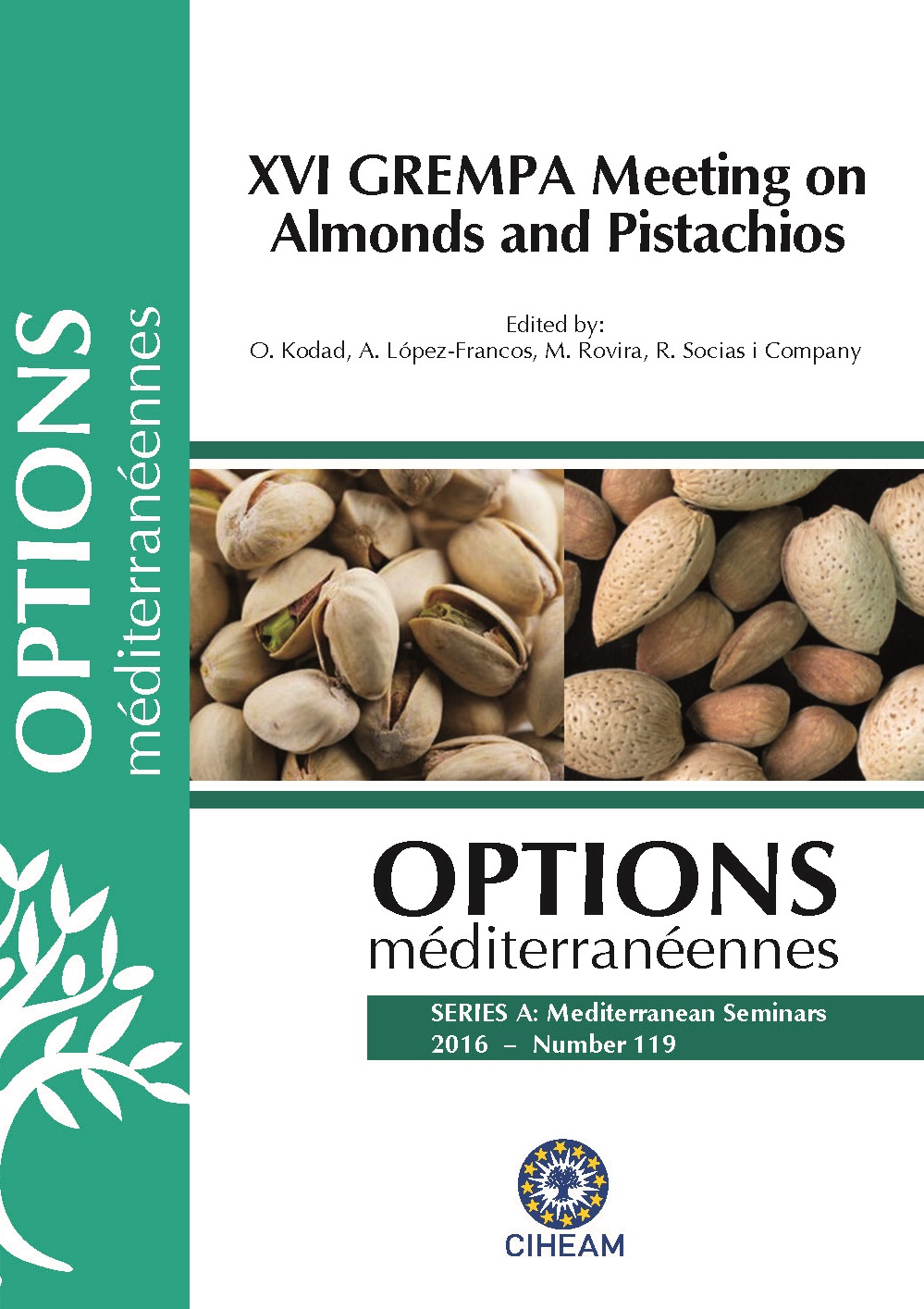| Article précédent | p. 123-125 | Article suivant |
‘Vialfas’, a new late blooming almond cultivar
The almond breeding programme of the CITA of Aragón aims at late-blooming cultivars with good horticultural behaviour, self-compatible, and with good kernel quality. After previous releases, ‘Vialfas’ responds to most of these objectives. This new release (selection I-3-27, clone 546) comes from the cross ‘Felisia’ × ‘Bertina’. Its blooming time is very late, three days before ‘Mardía’ on the average, with similar chilling requirements than ‘Mardía’ but with slightly lower heat requirements which could explain the difference in blooming time. Flowers are of mean size, white, with peristigmatic style. Bloom density is high and consistent. It is selfcompatible (genotype SfiS11), of high fruit set and resistance to frosts. Nuts are of mean size (4.7 g), as well as kernels (1.2 g), with a low shelling percentage (25%) and hard shell, and early ripening. Kernel composition is average for protein (18.84% of dry matter), oil (56.72%), and tocopherols (251.8 g/kg oil), and phytosterols (2589 mg/kg oil), but very high for oleic acid (78% of total oil). The tree is slightly upright, with relative tolerance to disease and highly productive.
Le programme d’amélioration génétique de l’amandier du CITA d’Aragon a comme objectif l’obtention de cultivars à floraison tardive, bon comportement agronomique, auto-compatibles, et avec amandons de bonne qualité. Après les obtentions antérieures, ‘Vialfas’ répond à la plupart de ces objectifs. Cette nouvelle obtention (sélection I-3-27, clone 546) vient du croisement ‘Felisia’ × ‘Bertina’. L’époque de floraison est très tardive, trois jours avant ‘Mardía’ comme moyenne, avec des besoins en froid similaires à ‘Mardía’, mais avec des besoins en chaleur un peu moindres, ce qui pourrait expliquer la différence de date de floraison. Les fleurs sont de largeur moyenne, blanches, avec un style péristigmatique. La densité florale est élevée et consistante. Le cultivar est auto-compatible (génotype SfiS11), avec une nouaison élevée et résistance aux gelées. Les fruits sont de largeur moyenne (4,7 g), ainsi que l’amandon (1,2 g), avec un faible rendement au cassage (25%), une coque dure et une maturation précoce. La composition de l’amandon est moyenne pour la protéine (18,84% de matière sèche), l'huile (56,72%), et les tocophérols (251,8 g/kg huile), et les phytostérols (2589 mg/kg huile), mais très haute pour l’acide oléique (78% de l’huile totale). L’arbre est légèrement érigé, avec une tolérance relative aux maladies et très productif.
- [ Afficher ]
- [ Télécharger ]
- [ Exporter la citation ]
Vous pouvez télécharger la citation au format :
- [ Imprimer ]
-
Mots-clés
AMELIORATION GENETIQUE, AUTOCOMPATIBILITE, PRUNUS AMYGDALUSCiter cet article
Socias i Company R., Alonso J.M., Kodad O., Ansón J.M. ‘Vialfas’, a new late blooming almond cultivar. In : Kodad O. (ed.), López-Francos A. (ed.), Rovira M. (ed.), Socias i Company R. (ed.). XVI GREMPA Meeting on Almonds and Pistachios. Zaragoza : CIHEAM, 2016. p. 123-125. (Options Méditerranéennes : Série A. Séminaires Méditerranéens; n. 119). 16. Meeting of GREMPA (Groupe de Recherches Méditerranéennes pour l\'Amandier et Pistachier / Mediterranean Research Group for Almond and Pistachio), 2015/05/12-14, Meknes (Morocco) . http://om.ciheam.org/om/pdf/a119/00007377.pdf



